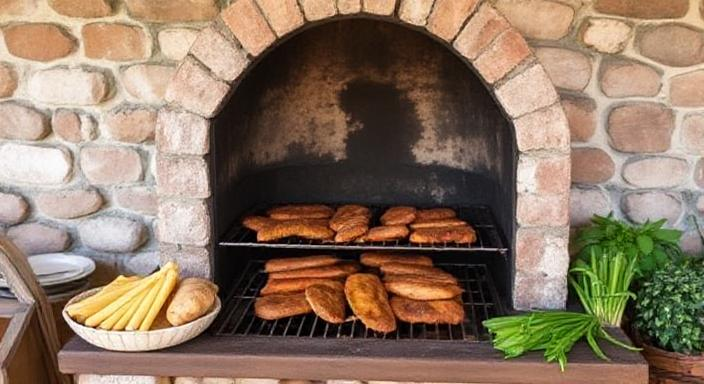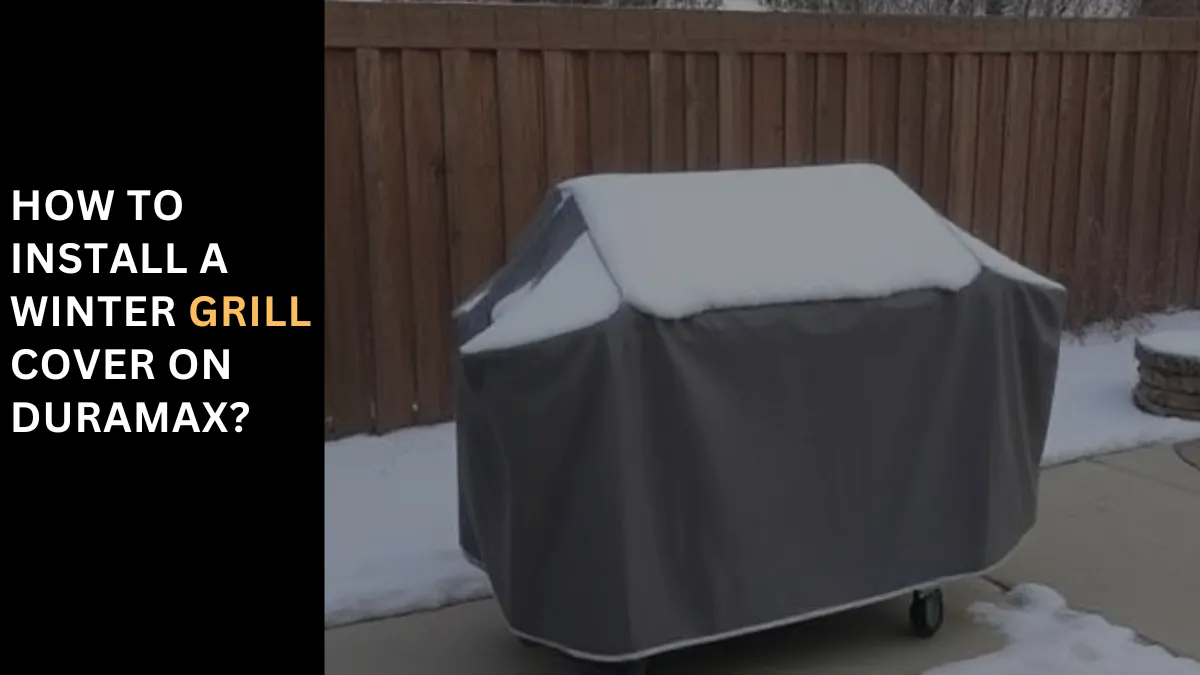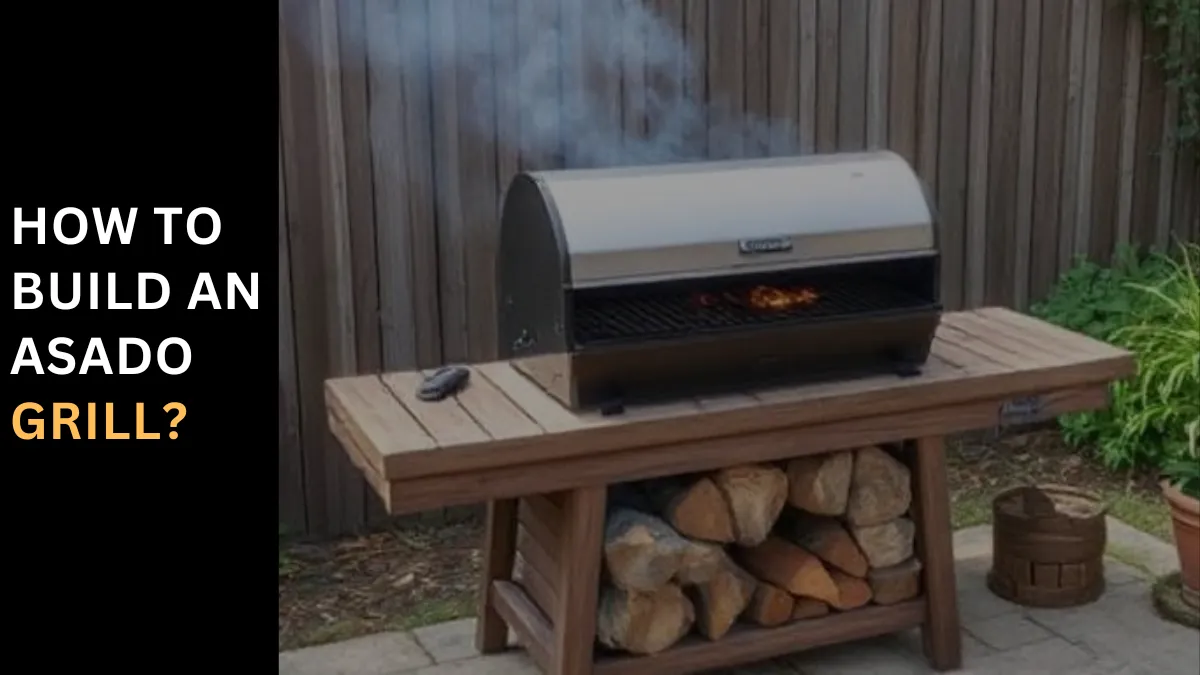How to Build an Asado Grill?
What is an Argentinian Asado grill, and why should we all have one?
Imagine the heart of your backyard transformed by a traditional Argentine Grill, a unique structure where meat and vegetables are cooked over coals produced by a predominantly wood fire.
This grilling method is distinguished by its ability to impart an intense smoky flavor and a consistent, dry heat, thanks to its C-shaped design, usually made of brick, mortar, and steel.
The grill consists of a small, rectangular space on the side to contain the wood fire, with a stainless steel grilling grate and a coal box inside to hold the coals.
This cooking technique separates the Argentine Parilla from other methods, ensuring that every meal is a testament to the Asado’s heritage.
DIY Projects for Grilling Lovers

As a grilling lover myself, I was delighted when the question came through our channel: “How can I build my Argentine grill?”
This article aims to cover the fundamentals of building an Argentine Asado grill, a simple yet sophisticated project that promises to produce memorable experiences that stand the test of time.
With a budget of less than $500, you can build your Argentine grill and enjoy the unique opportunity to understand the Argentine grilling tradition deeply.
How to build your own Argentine grill?
Decide the Size of Your Argentine Asado Grill

When planning to build your own Argentine Asado grill, the first step is deciding the size. It’s crucial to consider the range of grill sizes available based on the measurements in centimeters.
An ideal grill size can be determined using a table that shows various dimensions — height, width, and depth — tailored to the number of servings you expect to prepare.
For instance, a height of 70-90 cm is ideally considered, matching the height of a standard table to ensure comfort and ease in maneuvering food at the back of the grill.
Remember, these measurements are approximate and should be based on the actual context of where you locate your Asado Grill. Ensure the grill aligns with these dimensions to enhance your grilling experience.
Factors to Consider for Location
Locating your grill involves several factors that condition the overall cooking experience. The key elements to consider include protection from the wind, which could directly hit the grill, potentially extinguishing the fire or causing the coal’s heat to deviate.
Finding the right location can be tough, but an ideal solution is to locate the grill in a part of your garden or backyard where it fits seamlessly into the design and offers functionality while also being far enough from any combustive materials and trees.
This placement reduces the impact of gusts and winds and keeps sparks from falling onto combustive materials or the ground in front of the grill.
It’s also important to maintain a safe distance — a few meters or feet — between the grill and where people might eat to prevent any accidents.
Additionally, consider the height of the grill; it should not be too high or too low, allowing you to comfortably maneuver the food. Photos linked in resources can provide visual examples of well-placed grills.
Step-by-Step Guide To Building Your Argentine Parilla

Step 1: Prepare the Foundation
Begin by finding an ideal location for your grill—clear and level the ground to ensure stability. Locate the grill in a position that is accessible to your facilities and far enough from any combustive materials.
Once the spot is chosen, prepare the foundations by lowering the land about 10 cm for the base, then compact the soil and add a light layer of small rubble. Place steel mesh and cover it with cement to form a solid slab.
Step 2: Build the Main Structure
After the foundation has cured, start building the walls of the grill with brick and mortar laid with a mixture of cement, lime, and sand.
These walls should reach 70 cm in height, as indicated in the graphic below. Ensure the H section of the walls effectively divides the fire area from the grill section.
Step 3: Construct the Countertop
Prepare the base of the countertop by setting up shuttering and laying a metal mesh across the sections of the countertop. The countertop should be about 8-10 cm thick.
Mix and prepare your concrete to fill the countertop. Once set, build the second line of walls on this countertop slab.
Step 4: Install Functional Components
Now that the structure is in place, lay Refractory Bricks on all internal facing walls to contain the heat and protect the brick-and-mortar structure.
Then, install a steel grill grate, sized to fit the dimensions of your grill; typically, 60 centimeters wide by 90 centimeters long, but this will depend on your final measurements. Make sure the grill is equipped with self-standing legs, ideally 10-12 cm high from the countertop.
Step 5: Add Finishing Touches
For better management of your fire, install a fire cradle—this is optional but recommended to help manage the coals and fire effectively.
A simple V-shape design for the cradle will hold the wood and allow the coals to fall directly into the cooking pit. If desired, install a chimney on top of the asado to ensure the smoke can leave the grill through a good draft, which is crucial for effective airflow.
The chimney should be long enough to pull oxygen through, have a bell with a flue, and the crown shouldn’t be too big.
Now, with your Argentine asado grill finished, you’re ready to start enjoying your grill and cooking the most delicious meats the true Argentine way.
How To Prepare The Fire For An Argentine Asado?
Choosing the Right Wood or Charcoal for Your Asado Fire
Selecting the correct wood or charcoal to use for an Argentine Asado fire is a key decision that influences the flavor and quality of your cooking. Traditionally, fire is lit with wood, which is the authentic way to embrace the traditional aspect of Argentine grilling.
Charcoal can be used as well, either alone or as a mixture with wood, because it combusts faster and creates great embers more efficiently.
However, the heat from charcoal is very different from that of wood, which produces a better and more consistent temperature, enhancing the flavour of the meat on the grill.
Hard firewood has significant advantages, such as embers that retain heat longer, making your cooking experience more predictable and ultimately better.
The Ritual of Lighting the Asado Fire
In Argentina, the Argentine Asado is more than just a meal; it’s a centuries-old custom and ritual that unites families and is synonymous with celebrations and meetings.
Properly preparing the fire for your Asado is a sacred task that requires knowledge of the right type of heat needed to perfectly grill the meat. Lighting the fire and ensuring it has the right heat are the crucial previous steps in this grilling process.
Today, this article will explain how to prepare the fire correctly to get it right the first time, making every Asado event a memorable one.
What Kind of Firewood Do We Need for an Argentine Asado?
When choosing the right wood for your Argentine Asado, it’s necessary to select firewood correctly, based on the following criteria: the method of grilling you’re using, the duration of the grilling session, and the type of meat being grilled.
For a traditional Asado, primarily use very dry hardwood. This wood not only produces embers that sustain heat for a longer time but also ensures better quality heat.
Softwoods, on the other hand, should be avoided as they quickly combust, don’t provide embers that retain heat for a long time, and don’t produce sufficient heat for proper cooking.
How to Light a Good Fire for the Grill?
To light a good fire for your grill, it is essential to refrain from using any fuel like lighters or commercial fire starters. Such materials can leave an unpleasant taste in the food and are potentially dangerous if you cannot control the fire.
They also tend to disrupt the natural smoke particles that enhance flavor. Instead, focus on the preparation and selection of wood, using paper or cardboard to ignite the flames.
This context—avoiding quick-fix fuel options—ensures that the fire going under your grill starts clean and stays consistent, importantly affecting the outcome of your cooked meats.
Step-by-Step Guide To Building Your Argentine Parilla
Step 1 to Start a Good Fire for Your Asado: Choosing the Location
Choosing the location to start your Asado fire is crucial. Make sure the area has good ventilation, as fires need oxygen to burn and consume it fast; good ventilation is key.
You don’t want a strong breeze or wind, which can surely be counterproductive, extinguishing the fire before it properly starts.
Step 2 to Start a Good Fire for Your Asado: Arrange the Wood
For Step 2, arrange the wood correctly in your firepit. The easiest way to get the fire going is to place it in a pyramid shape.
Firstly, locate some paper or cardboard at the inner centre of the fire, then position the smallest pieces on top of the paper; they light faster and will support the largest trunks.
You can also put additional pieces of cardboard, pine cones, dry grass, branches, and citrus peels to give the food a vibrant aroma.
Step 3: to Start a Good Fire for Your Asado: Focus on Creating a Pyramid
Important to remember to leave a hole in the centre for air circulation since the fire needs oxygen to stay alive. This technique is often called the pyramid, which will help you design your fire.
By having all kindling and logs leaning towards the top with a small space where oxygen can flow, more oxygen enters, the flame becomes more powerful, and you better create coals to grill with.
Step 4: to Start a Good Fire for Your Asado: Light the Fire
Light the fire by putting a match to the centre pieces, ensuring you leave a small opening. Light the lowest parts first. Once the fire in the centre has lit up well, start arranging the wood so that the significant pieces also light up, creating a stable, growing fire.
Generally, a metal rod (a part of the barbecue set) is used to move the wood and arrange it as needed.
Conclusion:
Building an Argentine asado grill requires thoughtful planning and execution to ensure optimal cooking experiences. Start by selecting the right location with good ventilation and minimal wind interference, which is crucial for maintaining a consistent fire.
Choose your materials wisely, focusing on hardwood for its longevity and heat retention properties for the fire. Arrange your firewood in a pyramid shape to enhance oxygen flow and create a stable burn, setting a solid foundation for the grill itself.
Construct the grill using durable materials like brick, mortar, and steel, ensuring it’s well-positioned to accommodate the size of gatherings you anticipate.
By following these steps meticulously, you’ll craft a functional and enduring asado grill that brings the rich flavors and cherished traditions of Argentine grilling to your backyard.



